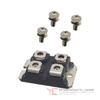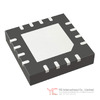- English
-
EnglishDeutschItaliaFrançais한국의русскийSvenskaNederlandespañolPortuguêspolskiSuomiGaeilgeSlovenskáSlovenijaČeštinaMelayuMagyarországHrvatskaDanskromânescIndonesiaΕλλάδαБългарски езикGalegolietuviųMaoriRepublika e ShqipërisëالعربيةአማርኛAzərbaycanEesti VabariikEuskeraБеларусьLëtzebuergeschAyitiAfrikaansBosnaíslenskaCambodiaမြန်မာМонголулсМакедонскиmalaɡasʲພາສາລາວKurdîსაქართველოIsiXhosaفارسیisiZuluPilipinoසිංහලTürk diliTiếng ViệtहिंदीТоҷикӣاردوภาษาไทยO'zbekKongeriketবাংলা ভাষারChicheŵaSamoa日本語SesothoCрпскиKiswahiliУкраїнаनेपालीעִבְרִיתپښتوКыргыз тилиҚазақшаCatalàCorsaLatviešuHausaગુજરાતીಕನ್ನಡkannaḍaमराठी
Beginner’s Introduction to Cache Memory and Its Uses
Catalog

Understanding Cache Memory
Cache memory is a small, high-speed storage area in a computer that helps the CPU access data faster than it would from the main memory (RAM). It's built using Static Random Access Memory (SRAM), which is faster but more expensive than the Dynamic Random Access Memory (DRAM) used in primary memory.
Cache memory is often built directly into the CPU because being close to the processor allows for faster data access. This proximity boosts the overall performance of the system, making it faster and more efficient. While cache memory is smaller and more expensive than regular RAM, it is oustandingly faster, with speeds up to 100 times greater, and response times measured in nanoseconds.
Cache memory stores copies of frequently accessed data. This reduces the time required to load applications or process data because the CPU can retrieve information from the cache rather than the slower main memory. Good cache management leads to faster, more responsive systems.
Cache memory is relevant not just in traditional computing but also in areas like cloud computing and big data. As the amount of data grows, having fast access to it becomes major. Advances in cache memory are essential to keep up with these demands, ensuring systems remain competitive and efficient.
Cache Memory Types and Their Relevance
Cache memory is known for being fast but expensive. It’s categorized by its proximity to the microprocessor, with different types offering various levels of efficiency.
• L1 Cache - L1 cache is the smallest but fastest type of cache. It's built directly into the CPU, which makes access times extremely short. This closeness is main because it allows the CPU to retrieve data and instructions very quickly, improving performance. L1 cache stores information the CPU will likely need soon, reducing delays.
• L2 Cache - L2 cache is larger than L1 but not as fast. It can be located either on the CPU or on a separate chip. Although it takes longer to access, it acts as a bridge between the fast L1 cache and the slower main memory. L2 cache helps by storing less frequently accessed data, which improves the performance of applications even when they don’t rely on the fastest memory.
• L3 Cache - L3 cache is the largest and shared among all the cores in a multicore processor. It helps with communication between cores and stores data needed by multiple cores. In multitasking environments, L3 cache lead to keeping the system running smoothly.
Evolution of Cache Memory
Cache memory has evolved efficiently from its early days in mainframes, especially with the rise of microcomputers. This transformation was driven by the need to address memory access bottlenecks. In the 1980s, using small and fast SRAM caches became common to boost the performance of slower but cheaper main memory.
Early personal computers had cache memory that was separate from the CPU, typically ranging from 16 KB to 128 KB. This cache helped reduce the gap between the processor's speed and the slower main memory, improving system performance.
A major milestone came with Intel's 486 processors, which introduced an 8 KB onboard L1 cache and a 256 KB L2 cache. This design became the basis for future processor architectures.
In 1995, Intel's P6 architecture further advanced cache memory by integrating the L2 cache within the CPU, synchronizing cache operations with the CPU's clock speed. This minimized delays and improved overall system performance.
Cache designs also evolved from simple "write-through" caches, which immediately updated both the cache and main memory, to more efficient "write-back" caches. Write-back caches delayed memory updates until necessary, reducing memory operations and improving performance.
The trade-off is between data accuracy and performance. Write-through caches ensure immediate data consistency, while write-back caches prioritize speed and efficiency, striking a balance between reliability and system performance.
Cache Memory Mapping and Data Writing
Mapping Techniques
There are three common cache mapping techniques:
• Direct-Mapped Cache - Each block from memory is assigned to a specific location in the cache. It’s simple and easy to implement but can lead to frequent cache misses when multiple memory blocks are mapped to the same cache slot. This method works well for some workloads, but for others, it may suffer from high conflict rates.
• Fully Associative Cache - A block can be placed in any available cache location, offering the most flexibility and reducing conflict misses. However, it is more complex and expensive to implement. It’s ideal for high-performance systems where cache misses must be minimized.
• Set Associative Cache - A middle ground between the previous two. A block can be placed in any of several (N) locations, reducing conflict misses without the complexity of fully associative caches. This method is commonly used in most systems as it strikes a good balance between performance and cost.
Data Writing Policies
Two main policies are used for writing data to cache:
• Write-Through - Data is written to both the cache and main memory at the same time. This ensures data consistency but can be slower due to the increased memory traffic. It's useful in systems where data accuracy is serious, like financial applications.
• Write-Back - Data is first written to the cache, and only updated in main memory when necessary (e.g., when the data is evicted from the cache). This reduces the number of write operations, improving performance. However, it requires additional mechanisms, like a “dirty bit,” to track changes. This method is ideal for systems with frequent data changes, such as gaming or other high-performance environments.
Both the choice of mapping technique and data writing policy should be tailored to the specific needs of the system for optimal performance and efficiency.
Comparison of Main Memory, Virtual Memory, and Cache Memory
Cache Memory vs. Main Memory
Cache memory is major for improving a computer’s speed by temporarily storing frequently accessed data for quick retrieval. It is made from SRAM, which is much faster than the DRAM used in main memory. DRAM, which forms most of the main memory, needs regular refreshing and is slower because it’s connected to the CPU through bus systems, introducing delays.
Using optimized caching algorithms can help reduce these delays and improve performance, especially in tasks that require heavy computation. Implementing better caching strategies often leads to noticeable improvements in system speed and responsiveness.
Cache Memory vs. Virtual Memory
When the available physical memory (cache and DRAM) is insufficient, virtual memory helps by using disk space to simulate extra memory. The operating system uses techniques like paging to move data between physical memory and the disk. This allows larger programs to run and multiple applications to operate at once.
However, accessing data from a disk is slower than accessing it from RAM, so managing this process carefully is main to maintaining system performance. Using SSDs for virtual memory can help reduce this delay.
Frequently Asked Questions [FAQ]
1. Is higher cache memory better?
Yes, in environments with multiple active processes, a larger cache is better because it reduces memory contention. Cache stores frequently accessed data, enabling faster CPU access. When the cache size grows significantly, like to 1GB or more, it starts to function similarly to RAM, which also temporarily holds data but on a larger scale.
2. What are the 3 types of cache memory?
There are three types of cache memory: Direct-mapped cache, Fully associative cache, N-way set associative cache. These types differ in how they manage data storage and retrieval, affecting performance based on the workload.
3. What happens if I delete cache memory?
Deleting cache only removes temporary files that help speed up processes. It won’t affect important data like login details, downloaded files, or custom settings. Clearing the cache is a safe way to free up space and enhance performance.
4. Is 2 MB cache memory good?
A 4MB L2 cache can boost performance by up to 10% in some situations. As software grows in complexity and needs more data, having a larger cache becomes even more beneficial, especially in resource-heavy tasks.
5. Is SRAM cache memory?
Yes, cache memory is usually made from Static Random-Access Memory (SRAM). SRAM is much faster than other types of memory, making it ideal for cache since it needs to keep up with the CPU’s demand for quick access to frequently used data and instructions. This speed is a must for efficient system performance.
Related Blog
-
Fundamentals of Op-Amp Circuits
December 28th, 2023
In the intricate world of electronics, a journey into its mysteries invariably leads us to a kaleidoscope of circuit components, both exquisite and co... -
How Many Zeros in a Million, Billion, Trillion?
July 29th, 2024
Million represents 106, an easily graspable figure when compared to everyday items or annual salaries. Billion, equivalent to 109, starts to stretch t... -
Comprehensive Guide to SCR (Silicon Controlled Rectifier)
April 22th, 2024
Silicon Controlled Rectifiers (SCR), or thyristors, play a pivotal role in power electronics technology because of their performance and reliability. ... -
CR2032 lithium-ion battery: multi-scenario applications and its unique advantages
January 25th, 2024
The CR2032 battery, a commonly used coin-shaped lithium-ion battery, is essential in many low-power electrical products such as digital watches and po... -
NPN and PNP Transistors
December 28th, 2023
For exploring the world of modern electronic technology, understanding the basic principles and applications of transistors is essential. Although the... -
What is a thermistor
December 28th, 2023
In the realm of modern electronic technology, delving into the nature and working mechanism of thermistors becomes a crucial endeavor. These precision... -
Explore the Difference Between PCB and PCBA
April 16th, 2024
A PCB serves as the backbone of electronic devices. Made from a non-conductive material, it physically supports components while also connecting them ... -
BC547 Transistor Comprehensive Guide
July 4th, 2024
The BC547 transistor is commonly used in a variety of electronic applications, ranging from basic signal amplifiers to complex oscillator circuits and... -
What Is A Solenoid Switch
December 26th, 2023
When an electrical current flows through the coil, the resulting magnetic field either attracts or repels the iron core, causing it to move and either... -
IRLZ44N MOSFET Datasheet, Circuit, Equivalent, Pinout
August 28th, 2024
The IRLZ44N is a widely-used N-Channel Power MOSFET. Renowned for its excellent switching capabilities, it is highly suited for numerous applications,...
Hot Parts
- CS6122GO
- PF38F3050M0Y3DHB
- 12062A101KAT2A
- DF75AA160
- S34MS01G200BHI000
- BD9767FV-FE2
- 12067C103JAT2A
- 74LVT16244BDGGR
- AD8044ANZ
- MC9S08QE16CLC
- APTM50AM17F
- OPA1664AIPWR
- M29W400BT-70N6
- ADM1030ARQ
- MX16C452QC
- EP2SGX30CF780C4
- OP4177ARZ
- T322E336K035AT
- 12065A562GAT2A
- TL7705ACD
- SY100S314JZ
- IRFB59N10DPBF
- ISL6569ACR
- UMK105CG820KV-F
- LMK042B7101KC-W
- E07110K0A
- MAX4364ESA+
- OR2C26A4PS240-DB
- UPD9961F9-CN3-A
- TAS5508PAG
- MC68EN360ZP25LR2
- MC74F543DW
- ATSAME70Q21B-CN
- TEN 8-4813WI
- 74ABT244AD
- ISPLSI1016E-80LJNI
- TMX320TCI6486ZTZ
- S29AL016D70BAI010
- TN80C186EA20
- UPD91076GF-3B9
- FDMS8D8N15C
- GT8920-PL141
- HD64338002A68FPV
- MCF5272CVM66R2J
- BCM59355A0IUB0GT
- SKCH 40/12
- LMR54410DBVR
- 1812CC563MAT1A












